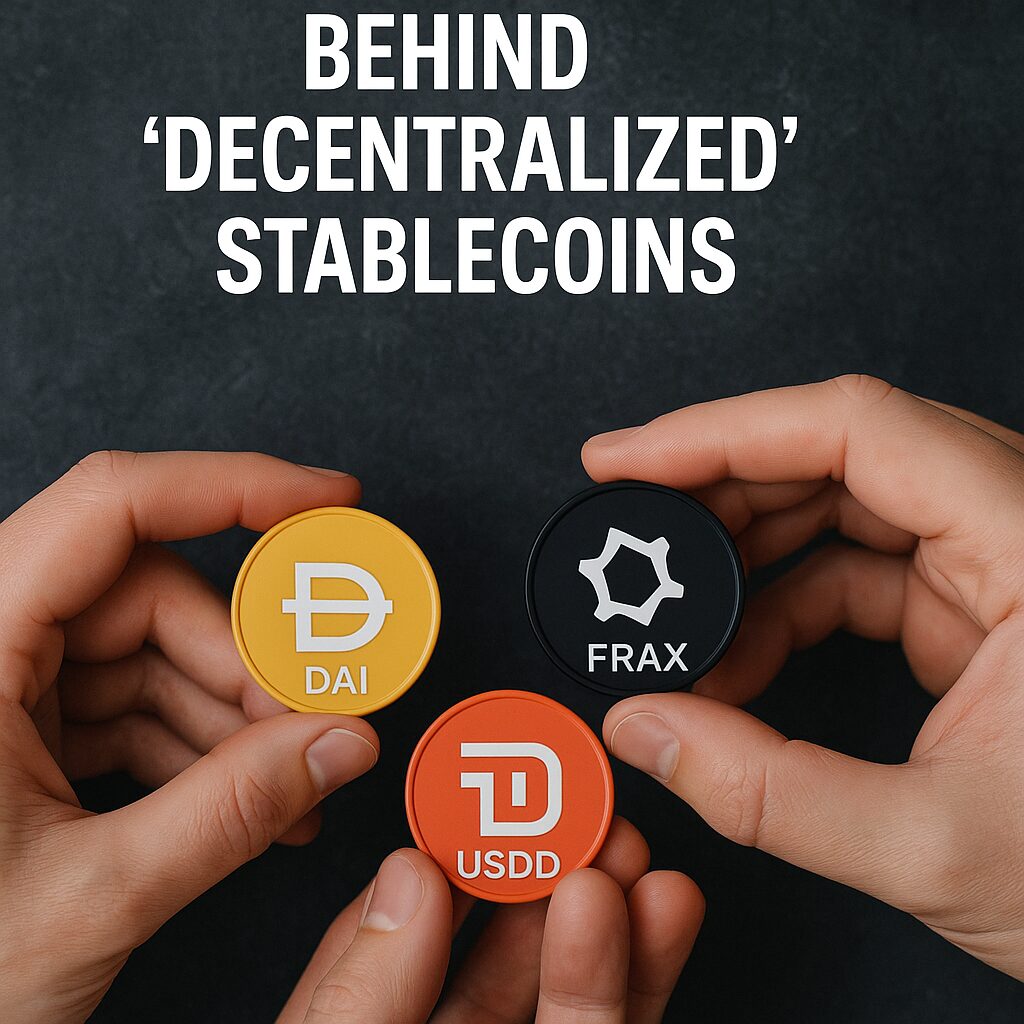Why Most Stablecoins Aren’t Truly Free From Control
📌 Is Your “Decentralized” Stablecoin Actually Centralized?
Many stablecoins claim to be decentralized—but are they really? This post uncovers the hidden levers of control behind popular tokens like DAI, FRAX, and USDD, and what that means for your money.
Why Most Stablecoins Aren’t Truly Free From Control
Stablecoins are often marketed as decentralized financial tools. But in practice, many of them are backed by centralized mechanisms, governed by entities, or influenced by traditional financial systems. If you believe that choosing “decentralized” means full autonomy, think again.
This post explores the inner workings of supposedly decentralized stablecoins, showing how control, governance, and censorship resistance vary widely—and why that matters.
1. DAI: Decentralized? Only Partially.
DAI, created by MakerDAO, is often praised as a decentralized stablecoin. But as of recent years, over 50% of its collateral is in USDC—a centralized asset issued by Circle.
- Implication: If Circle blacklists a wallet or freezes USDC, it directly affects DAI’s value and operations.
- Governance: Major decisions in MakerDAO require MKR token votes, which are often dominated by a few whales and VCs.
DAI is decentralized by design, but centralized in reality due to its reliance on external assets and governance centralization.
2. FRAX: Algorithmic with Central Levers
Frax uses a fractional-algorithmic model, with part of its backing in centralized stablecoins (like USDC) and the rest in algorithmic logic.
- Governance decisions are handled by the Frax DAO, but again, token distribution is highly concentrated.
- Reserves are monitored and adjusted by core team members and multi-sig wallets.
While more innovative, Frax still relies on trusted mechanisms and admin control in emergencies.
3. USDD by TRON: Decentralization in Name Only
USDD, issued by the TRON DAO Reserve, positions itself as decentralized—but:
- TRON founder Justin Sun publicly controls key wallets
- Reserves are backed by centralized assets
- There’s limited transparency around algorithmic behavior or collateral reserves
Despite the DAO label, TRON’s structure is arguably more centralized than USDC or BUSD.
4. Who Controls the Oracles?
Decentralization isn’t just about where the money sits—it’s also about who reports prices.
- Chainlink is the most popular oracle, but its nodes are permissioned
- Price feeds can be manipulated or censored
- Emergency switches often lie with core developers or governance councils
This oracle layer introduces hidden centralization, even in seemingly trustless protocols.
5. Emergency Powers and Admin Keys
Most DAOs or protocols that issue stablecoins maintain admin keys or emergency levers to pause contracts, upgrade logic, or freeze wallets.
- MakerDAO has an emergency shutdown module
- Frax uses multi-sig control to adjust parameters
- Other projects retain “guardian” roles to override smart contracts
These powers are meant for protection—but they also create central points of control.
6. Why It Matters for Users
- Funds can be frozen at the asset, protocol, or wallet level
- Regulators can exert pressure on individuals or DAOs controlling stablecoins
- Whales or insiders can influence governance against user interests
True decentralization is hard—and most “decentralized” stablecoins are, at best, hybrids.
7. What to Look for in Truly Decentralized Models
If you care about financial freedom, ask:
- Can the collateral be frozen by anyone?
- Are governance votes decentralized and transparent?
- Who controls the oracles and smart contract upgrades?
- Are there backdoors or emergency switches?
Stablecoins like RAI, LUSD (by Liquity), and sUSD attempt more decentralization—but none are perfect.
